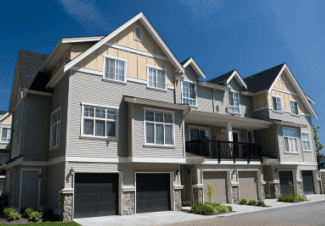Preserving Affordable Housing: Best Practices

But affordable housing developers can’t buy every affordable housing property that’s up for sale in order to keep these buildings in stock, or repair every affordable building burdened with deferred capital needs. What the industry can do, however, is ensure the best chances of preserving affordable housing by following six recognized best practices.
1. Be Prepared to Overcome Prior-Use Restrictions
Every old apartment building is different, and that’s especially true of those with a history in government programs. Such properties often entail layers of obligations and use restrictions built up over the years from a huge variety of federal, state, and local programs. “There’s a nearly infinite number of flavors [of programs],” says Ethan Handelman, vice president for policy and advocacy for the National Housing Conference, a nonprofit advocacy and research organization supporting the affordable housing community.
Consequently, the first step in recapitalizing any affordable housing is to fully assess any limitations that come with all of a property’s old agreements, subordinate mortgages, and deed restrictions. “You have to understand everything layered onto the property before trying to recapitalize,” says Handelman.
2. Plan for Long-Term Capital Needs
Affordable developers need to assess how much renovation a given property will need—and how much time the rehab will take. “Our rehab projects vary from a few thousand dollars a unit to $100,000 per unit,” says Neal Drobenare, senior vice president of acquisitions for The NHP Foundation (NHPF), a nonprofit organization dedicated to preserving and creating affordable multifamily housing. “We see things that [range from needing] some sprucing up to those that are gut rehabs.”
A recapitalization plan will also need to account for keeping the property running smoothly until the next time it can recapitalize. “Most subsidized properties go through some kind of recapitalization every 15 to 20 years,” says Handelman.
That long time frame is based on the 15-year compliance period for federal low-income housing tax credits (LIHTCs), the biggest source of affordable housing financing.That’s a long time compared with market-rate buildings, which typically get a fresh capital infusion every five to seven years when the properties are sold and renovated or refinanced after the completion of the expiration loans, whose terms are usually 10 years or less.
Unless a building was poorly designed from the start, it’s often more efficient to renovate the apartment than demolish it and start from scratch. “It’s rare for us to see projects that are candidates for demolition,” says Drobenare. “The numbers work best for us when buying a property and performing gut rehabs.”
3. Move Quickly to Win the Bidding Wars
In strong housing markets, affordable housing developers often need to move quickly to compete with other potential buyers. These include investors who can “hold properties until the affordability restrictions expire—especially in markets like New York, California, and Washington, D.C.—and then sell the properties for significant profit or operate them as market-rate transactions,” says Cory Mian, vice president of real estate development for the nonprofit Preservation of Affordable Housing (POAH).
Other buyers can crowd out mission-driven affordable housing developers even if they don’t intend to take the properties out of their affordable housing programs. Many investors now aim to simply hold on to their fully occupied properties and enjoy the steady income from subsidized rents without investing much in the long-term condition or maintenance of the buildings.
To win the bidding wars, affordable housing developers now often line up capital that allows them to buy first and arrange a full financing package later, often including a reservation of LIHTCs.
“Today, it’s rare to be able to close directly into a LIHTC transaction; sellers won’t wait,” says the NHPF’s Drobenare. Several years ago, the Foundation and other developers joined together to create a $50 million fund to acquire properties. “Funds such as ours, as well as lines of credit for quick-strike purchasing, have become the norm, not the exception,” he adds.
Even with capital sources like these, there are limits to the prices affordable housing developers can reasonably pay for a property. “For acquisitions, we have to look at the overall reasonableness for the area,” says Lori Little, director of capital markets and investor relations for the National Affordable Housing Trust.
Perhaps because affordable housing developers are careful not to overpay for properties, they pass on many of them. “As a rule of thumb, for every purchase we make, we have to evaluate 20 projects,” says Drobenare.
Affordable developers also must be careful when they acquire a distressed property, because the capital to fix any serious problems might not be available for a long time. “Quality owners don’t want to own subpar properties while they await funding for the much-needed rehab,” says POAH’s Mian. “Especially owners that pride themselves on maintaining attractive, updated buildings.”
Wise developers, then, are patient and wait for the opportunity that makes sense. Those who lose properties to other investors may get another chance at the same property later on: Many investors pay too much to buy affordable housing properties and are later forced to sell or default. “This is much harder than it looks,” says Little. “Frequently, properties are sold again.”
4. Get the Community on Your Side
Any renovation of older apartments will have to consider the surrounding community, as well as residents living at the property, to gain their support. Building consensus for affordable housing can be challenging in neighborhoods beset by NIMBYism, for example. Including local residents and political leaders in the renovation process can go a long way toward achieving acceptance and, ultimately, success.
5. Focus on Energy Efficiency
Affordable housing properties often can be greatly improved with better insulation, energy-saving appliances, and other energy-efficient, sustainable-design features. “Funders are requiring it, but it also can make a huge difference in property operations,” says Drobenare.
Water savings, in particular, can provide a boost to a property relatively quickly— with a comparatively small investment of cash. “It’s not unusual for us to see 25% water savings, even before the start of a major rehab, by implementing a low-cost water-savings plan,” says Drobenare.
Even features that don’t seem to pay for themselves immediately can contribute to a property financially by helping it operate more smoothly during potential lean times in the future.“Capital dollars invested in this direction can lead to more-efficient operations, thereby leaving more cash flow to be used for ongoing maintenance issues,” says Mian.
Energy efficiency is also a priority for nonprofit developers on a mission to serve low-income families, since many of the benefits flow to the residents. “Keeping energy costs low is even more important for low-income households,” says Drobenare.
6. Partner With Other Developers
To successfully recapitalize a property, affordable housing developers need experience; these transactions are too complicated to improvise. That doesn’t mean inexperienced developers should stay away, however. Community groups acting as developers often partner with more-experienced parties that have preserved similar affordable housing properties in the past.
Developers new to affordable housing can also hire individual consultants and experts who understand the challenges ahead, whether the task be applying for LIHTCs, restoring a historic building, or navigating complicated local building codes and zoning laws. The key in any case is to make sure your development team includes professionals who have the experience you’ll need to succeed.
With affordable housing so sorely needed today, preserving what we already have, in addition to building new projects, will be crucial in the ultimate goal of providing housing for everyone.
Source: multifamilyexecutive.com















 Accessibility
Accessibility